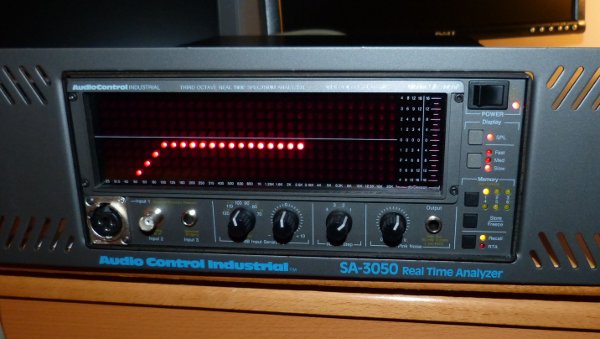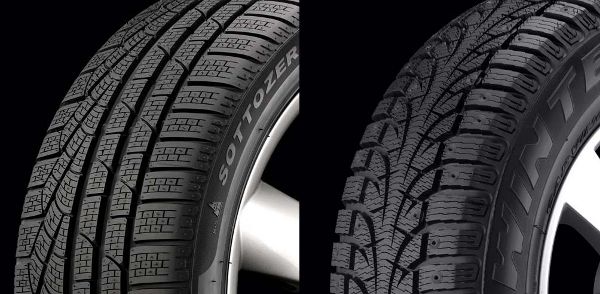Saturday, September 29, 2012
Yet More Audio Equipment Research
Arc Audio finally got back to me – exactly six days from the date of my original email. My first question reflected my desire to use one or possibly two of the smaller KS series amps and asked simply whether they had any plans to add balanced inputs to the KS series. Their answer: a predictable NO. I asked if there was some way I could use the ALD to convert to balanced and then back again so I could use it in conjunction with the KS series. The answer again: NO. But they did suggest I could use the ALD in single-ended mode to gain the benefits of a line driver. The idea behind this is simple: increase the voltage so that noise becomes a smaller percentage of the signal content and the amp gains can be turned down, further reducing noise. Ignoring the fact that my headunit already supports 4V line outputs, balanced lines exist for a reason so I didn't consider that an acceptable solution.
I also sent another request to Soundstream that aimed to clarify the exact size of their amplifiers because while their owner's manual is entertaining in places (you'll have to read it to know what I mean), I found it lacking in certain technical areas including the exact dimensions I'd need to integrate the product into my vehicle. Unfortunately, they admitted that the roughly 16” width specified in the manual did not include the mounting flanges and the total width was in fact 16.875”. That put a damper on my plans for a bi-amp configuration that could utilize balanced inputs.
 The obvious solution to the problem would be to engineer a set of brackets
and shelves – an amp rack, really – to stack the amplifiers vertically
on the rear deck but when I realized how much trunk space it would consume
I decided I would be more or less forced to go with a single amp, or deploy
the smaller KS series amps and find another way to improve the quality of the
signal sent to those amps.
The obvious solution to the problem would be to engineer a set of brackets
and shelves – an amp rack, really – to stack the amplifiers vertically
on the rear deck but when I realized how much trunk space it would consume
I decided I would be more or less forced to go with a single amp, or deploy
the smaller KS series amps and find another way to improve the quality of the
signal sent to those amps.
Toward that end I read several white papers on balanced line transmission published by Jensen Transformers and that drew me to investigate some of their products including their transformer coupled ISO-MAX audio isolator. The CI-2RR appeared to be an ideal solution to provide ground noise rejection – the most likely form of noise in a BMW due to the nature of the electrical system design. The device also promised to provide some RFI rejection as long as the outputs from the device are kept short (they recommend less than 3 feet). I surmised that as long as no signal-carrying conductors are cut to a ¼ wavelength of any frequency I might care to transmit on they shouldn't turn into antennas, but given the near field strength I think it's inevitable RFI will be a problem regardless of the solution I choose. The least I can do is minimize it.
The upside to the ISO-MAX, as compared to the ALD, is that I won't need to find a place for them close to the headunit. They would likely be mounted in the trunk close to the amp(s) and that would make them easier to service. The CI-2RR retails for $150 and I need two, which makes them more expensive than the ALD, but a better design by virtue of the fact that they are passive devices (i.e. they don't require any power) and are guaranteed to provide the kind of isolation that only a transformer can provide.
There are reasons why, incidentally, the pro audio industry used transformer coupled balanced lines for years before moving more recently to digital transmission standards (Audio over Ethernet, for example). Availability of suitable operational amplifiers was clearly the limiting factor long ago but even modern active solutions, including those deployed in the Arc ALDs, work great in the lab but are often found to be less than ideal in the real world. Transformers are still the best solution and I see only one problem with the use of transformers in this context: cost.
While I once again entertained the idea of a single amp solution with custom crossovers and discussed matters with the same colleague who suggested I go active, he decided to take pity on me and give me his mid-1990's vintage Audio Control SA-3050A real time spectrum analyzer he once used on the road. Most audio spectrum analysis is done on computers these days and I plan to do the bulk of my own analysis on one as well but I expect to use the standalone RTA to verify those measurements. The unit also takes SPL measurements so while I care more about sound quality than loudness this feature should come in handy as well.
Of course, while I was very thankful to accept the gift it wasn't exactly without strings – he told me the measurement microphone was damaged at a gig one night when some drunken loser mistook it for a vocal mic and screamed into it. That's a clear no-no, since it can (and did, in this case) result in damage to the microphone capsule. Audio Control wants $150 for a new one and $100 to calibrate the mic to the box, and for that I have to send the unit back to them. I figure I'll be into it for about $300, but that's still a great deal for a good piece of test equipment, the latest revision of which still sells for $1500.
Winter Tire Options
 This week, as average daybreak temperatures once
again flirted with the upper 40's, I figured I'd take some time to evaluate my
winter tire options. While the Dunlop Winter Sport M3 has never been the perfect
tire with regard to quality it has performed well in its intended role and been
reasonably priced, so I naturally expected to buy another set this year. Unfortunately,
a short search on Tire Rack revealed it has been discontinued. Figures.
This week, as average daybreak temperatures once
again flirted with the upper 40's, I figured I'd take some time to evaluate my
winter tire options. While the Dunlop Winter Sport M3 has never been the perfect
tire with regard to quality it has performed well in its intended role and been
reasonably priced, so I naturally expected to buy another set this year. Unfortunately,
a short search on Tire Rack revealed it has been discontinued. Figures.
More disturbing, however, is the fact that there is now only one performance winter tire available in 225/50/16 and that's the Pirelli Winter Sottozero Serie II (pictured: left). It seems reasonably well reviewed but the tread pattern is not nearly as aggressive as the M3 and appears to be better suited to very light snow and cold temperatures in general. That of course nicely describes the typical winter here in NJ so it's not a deal breaker.
However I'm not one to limit my options or make an uninformed decision so I went in search of alternatives and began with a visit to the awesome Miata.net Tire Size Calculator. As a 225 section width is already fairly large for my 7” wheels and better snow traction actually comes from narrower tires I knew I couldn't safely go wider. That dictated I look for tires with a smaller section width.
My options opened considerably for 205/55's because that is the OE spec for winter tires on this car but I quickly decided I don't want to run bicycle tires because dry performance will suffer too much. The other alternative is 215/55. This is only 10mm smaller in width (which will not be noticeable, either visually or behind the wheel) and a mere 1.8% larger in diameter than stock but less than the 2.2% I experienced when I equipped my CSL reps with 235/40's. Several additional tires are available in 215/55 including the Sottozero but none are in the Performance Winter segment.
Although I was reluctant to consider a full-blown winter tire, the Pirelli Winter Carving Edge (pictured: right) caught my eye because its tread pattern is quite similar to the M3, the reviews are excellent and the price reasonable, particularly when I consider keeping my still-brand-new M3 on the full size spare. Another possibility is the Dunlop Graspic DS-3 but I'm leery enough of Dunlop quality at this point to consider a different brand like Pirelli.
Mileage: 225075



